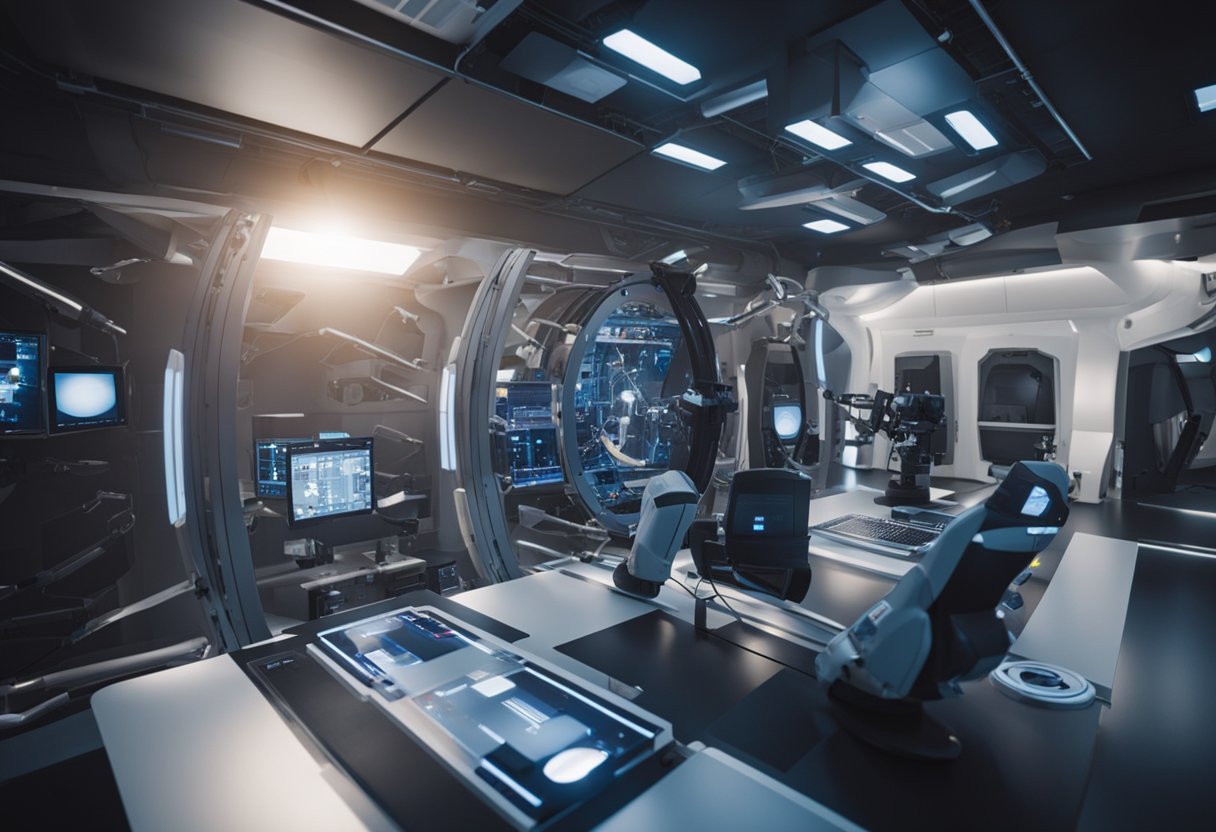
Daily Routines in Space: Living and working in the unique environment of space requires a highly structured routine that balances the demands of work with essential self-care. Astronauts onboard the International Space Station adhere to a carefully scheduled day that ensures they can perform scientific research, maintain the station, and manage their physical and mental well-being in microgravity. A standard day in space starts around 6 a.m. GMT and extends into the evening, covering everything from work to workout sessions designed to counteract the effects of zero gravity on the body.
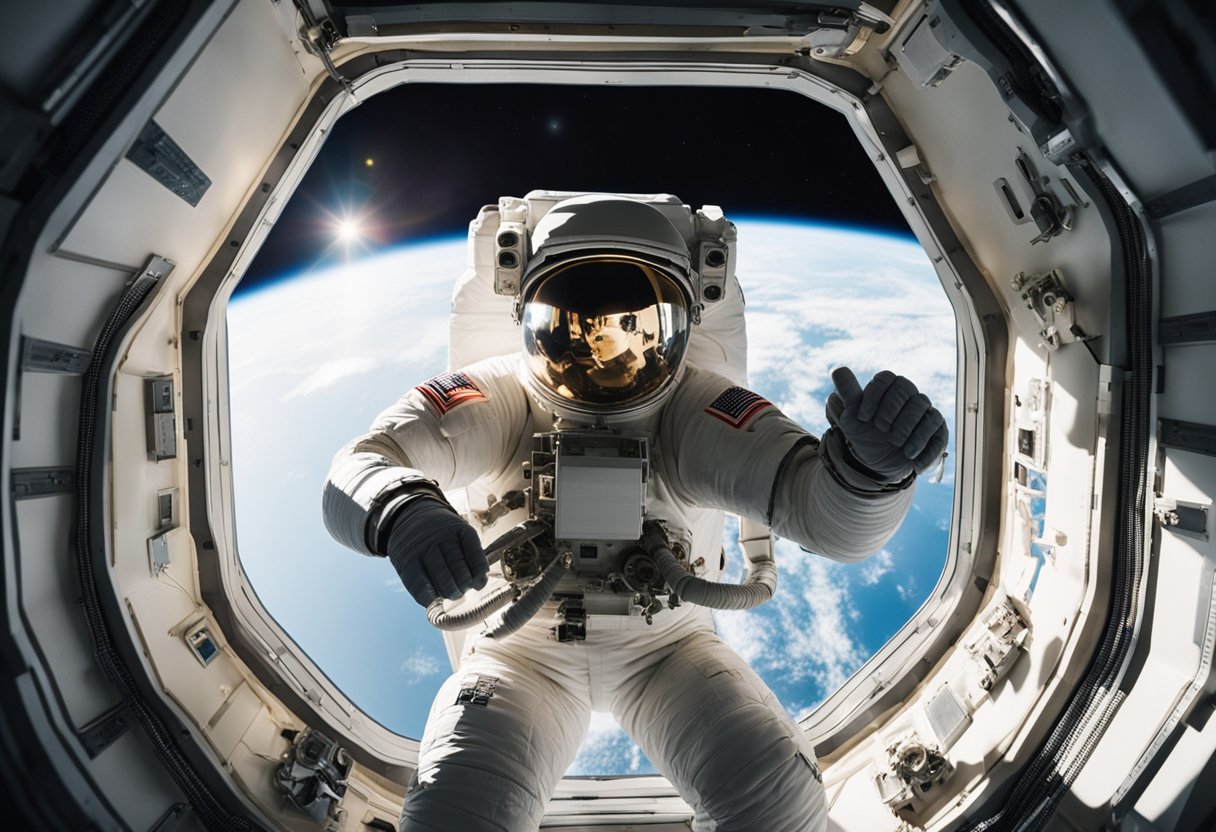
While space may seem like the realm of endless serenity, a typical astronaut’s day is punctuated by the need for meticulous attention to personal hygiene, the psychological challenges posed by isolation, and adjustments to sleeping cycles influenced by numerous sunrises and sunsets. The conditions onboard the space station also necessitate the use of specialised systems and equipment for routine activities, such as the advanced life-support systems that recycle air and water. These routines are not just about survival but also about ensuring that the crew can operate effectively and conduct scientific research that benefits those of us on Earth.
In space, maintaining a structured daily routine is vital for astronauts’ health and well-being. We understand that in the unique environment of space, living and working require adaptation to zero gravity and the absence of natural day-night cycles. Astronauts aboard the International Space Station (ISS) experience around 15 sunrises and sunsets every 24 hours, necessitating an artificial schedule to dictate their daily routines.
Here’s a glimpse into an astronaut’s daily routine:
Morning Hygiene and Breakfast: Just like on Earth, the day starts with personal hygiene. Astronauts clean themselves with no-rinse soap and shampoo due to the lack of running water.
Work Schedule: The bulk of an astronaut’s day is dedicated to scientific research, maintenance of the ISS, and exercise. Exercise is crucial to combat the muscle atrophy and bone density loss caused by microgravity.
Meals: Eating in space is an interesting affair due to microgravity. Food needs to be secure to prevent it from floating away, often involving the use of magnetic trays or Velcro.
Personal Time and Communication: Astronauts have some time allocated for leisure, during which they can gaze down at Earth, read, watch films, or communicate with family via video calls.
Sleep: Despite the frequent sunrises and sunsets, astronauts must adhere to a strict sleep schedule to ensure they get enough rest, typically in a sleeping bag tethered to avoid floating around.
We align our training and simulations at SpaceVoyageVentures.com with these vital space practices to give our clients a realistic understanding of what life beyond Earth entails. Our dedication to authenticity ensures that aspiring space travellers get a true-to-life preview of their potential future in orbit, whether they are looking towards available or forthcoming space tourism ventures.
As we orbit Earth, our daily routines adapt to the unique environment of space. Waking up in zero gravity aboard the ISS involves a series of rituals that ensure astronauts’ well-being and readiness for the day’s tasks.
Our day starts with the beep of an alarm, tuned to our circadian rhythms. To ensure we wake up early, each astronaut has a personalised wake-up call. This could be a favourite song or a recording from loved ones. We quickly orient ourselves and stabilise using handrails to prevent floating away unintentionally.
Our morning routine includes personal hygiene—a challenge in microgravity. We use specially designed hygiene kits that include no-rinse shampoo and edible toothpaste, as conventional methods aren’t feasible. For shaving, we have the option of electric shaving or wet towels to capture hair trimmings.
For breakfast, our meals are a selection of freeze-dried and thermostabilised foods. We rehydrate these using syringes and consume them with special utensils designed to prevent crumbs, which can be hazardous. Nutrition is vital for maintaining our health and stamina in space.
With breakfast done, we review our schedule. The day’s agenda is packed with important tasks ranging from scientific experiments to maintenance duties. Careful planning and consistency in our routines maximise productivity and ensure critical missions are completed efficiently.
The life of a crew member aboard the International Space Station revolves around a well-structured routine that includes scientific research, daily exercise, meticulous maintenance, and regular communication with Earth.
We, the crew on the ISS, engage in a slew of scientific endeavours designed to benefit life on Earth as well as future missions. This encompasses a broad range of fields from biology to physics. The microgravity environment allows us to perform experiments that would be impossible on Earth.
To counteract the effects of prolonged weightlessness, we adhere to a strict regimen that includes 2.5 hours of exercise every day. Equipment like the treadmill and exercise bike are crucial for maintaining muscle tone and bone density. Physical health is a top priority for us.
Staying connected with Earth is essential for both operational and psychological health. We write emails and have video calls to stay in touch with family and mission control. It’s part of our daily routine to ensure we remain grounded, despite being 400 kilometres above.
Living in space requires us to perform routine maintenance and cleaning to ensure the station’s environment remains safe and functional. We use vacuum cleaners to collect floating debris and follow a schedule to check and repair equipment, a task that is integral to our on-station duties.
Our meals in space are carefully planned to provide the necessary nutrients while also offering a range of flavours. Freeze-dried foods and specially designed utensils are staples for us. We gather together for meals, an act that strengthens our bond as an international crew.
Through regular routines and caring for both our physical and mental well-being, we continue to push the boundaries of what’s possible in space exploration.
In orbit, we prioritise our mental well-being as much as our physical health. Managing stress, isolation, and the unique challenges of space requires a combination of structured routine and personal leisure activities.
We allocate time for leisure activities, which is crucial for maintaining mental health. In space, leisure time can involve looking out of the window at Earth, reading, and even watching films. These activities give us the free time necessary to relax and recharge. Creativity is also encouraged; space has been a canvas for many astronauts who turned into artists, capturing the beauty of the cosmos through photography or other mediums.
Maintaining motivation and focus is essential for our well-being and the success of the mission. We set personal goals and track our progress, which helps in nurturing a sense of accomplishment. Building productive habits and adhering to our daily routine assists us in staying grounded. It requires willpower to keep a disciplined schedule while at the same time allowing flexibility to create moments that prevent monotony.
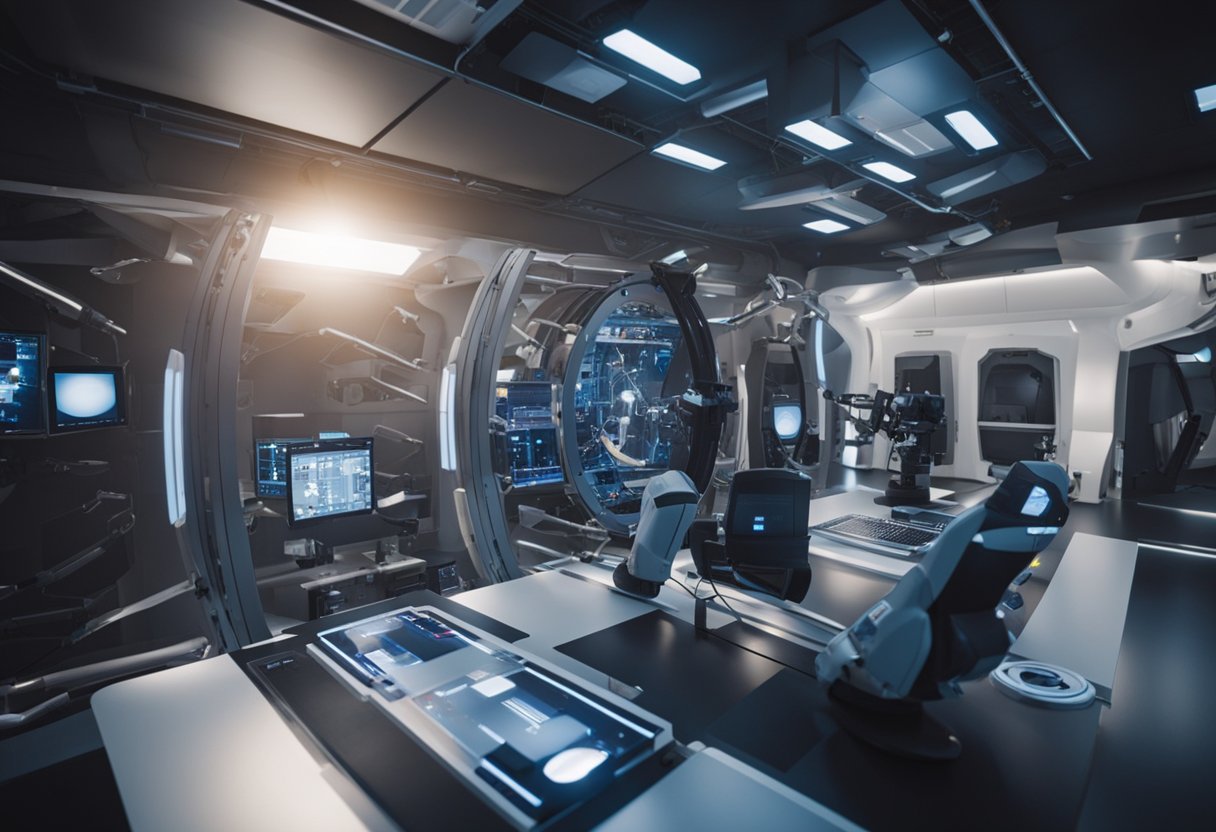
In maintaining the habitability of spacecraft for astronauts, several specialised systems and equipment are crucial. They ensure the proper functioning of life-support systems, manage waste efficiently, and provide necessary physical training equipment to keep astronauts healthy.
Life-support systems are vital to sustain a habitable environment aboard spacecraft. These systems regulate the air quality by removing carbon dioxide and managing oxygen levels. Energy to power these systems typically comes from solar panels.
Sanitation and waste management aboard a spacecraft involve handling wastewater, solid waste, and hygiene needs.
Daily exercise is essential in microgravity to counteract the loss of muscle and bone density. The International Space Station is equipped with specialised exercise machinery that enables astronauts to perform a full-body workout.
Each piece of heavy equipment such as the Advanced Resistive Exercise Device (ARED) is designed for the unique challenges of working out in space, securing astronauts against floating while they exercise and ensuring they can maintain their physical health for the duration of their stay in space.
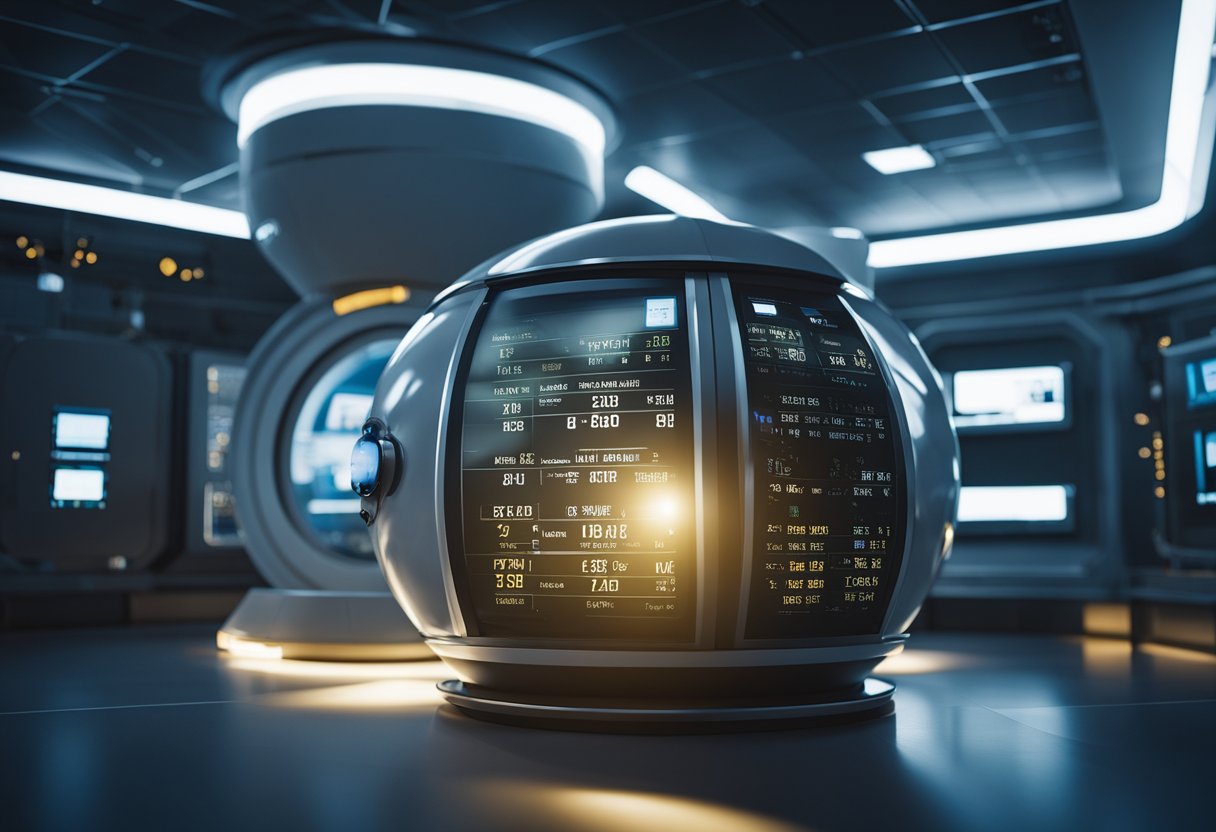
Achieving adequate sleep is a challenge for astronauts due to the unusual environment of space. This section delves into how the absence of gravity affects sleep and what sleeping arrangements are like aboard a spacecraft.
In the realm of microgravity, astronauts must adapt their sleep-wake patterns to a place where the usual cues like sunrise and sunset are absent. Our body clocks, or circadian rhythms, typically operate on a 24-hour cycle, synced largely with daylight on Earth. However, in space, astronauts witness about sixteen sunrises and sunsets every 24 hours, which can lead to a form of jet lag. The impact of microgravity on sleep can result in shortened sleep durations and affects sleep structure. Astronauts utilise tailored lighting schemes to help mimic the natural progression of day and night to support natural circadian rhythms.
Astronauts sleep in sleeping bags which can be attached to the wall, ceiling, or any available surface, allowing for a restful sleep without drifting away. These sleeping bags often include arm slots to prevent the sleeper’s arms from floating upward, a common yet peculiar aspect of sleeping in microgravity. Understanding the science of sleep aboard spacecraft has led to specific design features for personal sleeping quarters, offering a form of sleep sanctuary that’s shielded from noise and light disruptions. A peaceful and well-planned sleeping environment is essential for enabling astronauts to get the rest required to maintain their physical and mental well-being during missions.
In space, we must adapt our hygiene routines to the microgravity conditions. Our personal hygiene kit is tailored to conserve water and maximise cleanliness.
In microgravity, we use wet towels and no-rinse body wash to cleanse our skin. The absence of running water requires us to heat wet towels and lather with a soap that does not need to be rinsed off, effectively removing dirt and maintaining hygiene.
To manage our hair and facial hair, special no-rinse shampoo allows us to maintain a clean appearance and manage hygiene. Trimming facial hair becomes a careful task to ensure loose hairs do not float in the cabin. We use vacuum devices to contain hair clippings.
Just like on Earth, brushing our teeth is a twice-daily routine. We use a small amount of toothpaste, as per our training, and swallow the toothpaste after brushing—spitting isn’t an option in space. This practice maintains our oral health without using excess water.
We often consider the International Space Station (ISS) as a place for groundbreaking research and day-to-day living in microgravity. However, an integral part of the space routine involves spacewalks, or Extravehicular Activities (EVAs), where astronauts step outside the ISS. These evolutions require meticulous preparation and skilled execution to maintain the station and support scientific missions.
Before an astronaut can gaze upon Earth from the unique vantage point of outer space, they must undergo comprehensive EVA training. Training takes place in the Neutral Buoyancy Laboratory (NBL), where astronauts experience a simulated microgravity environment. This involves being suited in a specially designed spacesuit to learn about the metabolic rate characterisations during a spacewalk. Our understanding of these intricate preparations is informed by contributions from bodies such as NASA in the ongoing support for lunar and Mars simulations.
Training Regime:
Once prepared, our astronauts embark on their mission outside the ISS, engaging in a carefully defined set of tasks that may range from repairing equipment to conducting scientific research. The experience is vastly different from any Earth-bound activity due to the absence of gravity, necessitating unique protocols and tools. The ISS orbits Earth at approximately 17,500 mph, presenting a formidable environment for these critical operations.
Vital Considerations:
Through these necessary EVAs, we not only maintain the ISS but further our collective understanding of living and working in space. Every spacewalk is a testament to human ingenuity and the relentless spirit to extend our reach into the cosmos. For those interested in the future potential of space activities, including tourism, SpaceVoyageVentures.com offers insights into the evolving landscape of human space exploration.
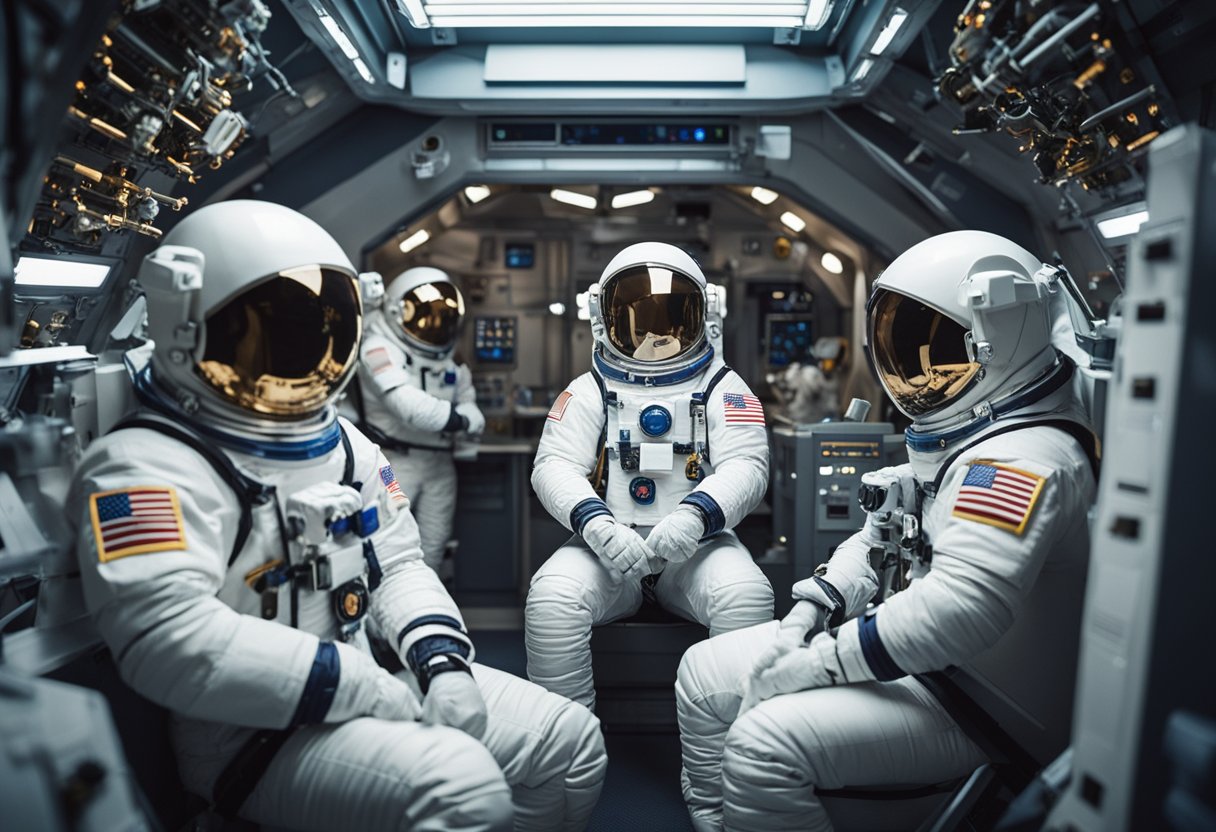
In the unique environment of space, we must navigate a tapestry of cultural backgrounds and languages while maintaining strong interpersonal relationships essential for mission success and daily routines.
Working with an international crew demands a high level of cultural sensitivity and effective communication. English serves as the common language aboard the International Space Station, but our daily interactions are enriched by understanding and respecting each other’s language nuances and cultural customs. For instance, when we break the routine for a special occasion, it’s not uncommon for astronauts to share stories or foods from their homelands, celebrating diversity and fostering unity.
As new space tourism ventures like SpaceVoyageVentures.com expand the horizon of who can travel to space, we often consider how entrepreneurs, such as Richard Branson, influence the evolving dynamics of space travel. Their initiatives introduce a wider spectrum of cultures into a once exclusive domain, underscoring the importance of cultural competency in our training and daily operations.
Recreation and cultural activities play a pivotal role in our mental health and team cohesion. Beyond our duties, we dedicate time to leisure activities which often reflect our diverse backgrounds. From watching films to celebrating festivals from various cultures, these moments offer respite from a regimented schedule and strengthen the bonds between us. We have even seen crew members give language lessons or lead cultural craft workshops, enabling us to immerse ourselves in the richness of cultural exchange while millions of miles from Earth.
Upon re-entering Earth’s atmosphere, astronauts experience a significant shift, not only in their physical surroundings but also in their daily routines. Adjusting to Earth requires a period of re-adaptation, where the body must acclimatise to the planet’s gravity and we reassess our habits and schedules.
Reverse culture shock might not be an obvious concern, but it is prevalent amongst us as we transition from the highly structured environment of a space station back to the relative freedom of Earth. Familiarising ourselves with Earth’s social norms and reconnecting with family and friends become part of our re-entry process.
We often experience physiological changes, and adaptation plays a crucial role in recovery:
For us, resuming a ‘normal’ life also means learning to cope with sensory overload that our time in space may have dimmed. The plethora of sounds, sights, and smells on Earth can initially be overwhelming.
We utilise tools and habits developed in space, as they provide a framework for integrating back into Earth life. From maintaining meticulous schedules to committing to regular physical activity, these methods help us regain a sense of normality.
As space travel evolves, visitors from upcoming ventures like SpaceVoyageVentures.com could also anticipate these challenges as space tourism becomes more accessible to the public. Currently, astronauts lead that path, but soon, many more may share the understanding of this unique transition.
In our journey to understand astronauts’ lives in orbit, we’ve gathered some of the most common queries about their daily experiences on the International Space Station (ISS). You’ll find out how they handle everything from personal hygiene to scientific research in a microgravity environment.
Astronauts on the ISS follow a structured routine that includes work, exercise, and leisure. They partake in a variety of tasks such as maintenance of the station, monitoring experiments, and engaging in conference calls with mission control. Check out A day in space: Here’s what an astronaut’s daily routine looks like for a closer look.
Astronauts maintain their hygiene using specially designed tools to accommodate the absence of gravity, such as no-rinse shampoo and body wipes. To brush their teeth, they use a small amount of water and swallow the toothpaste after brushing. Learn more from NASA’s insight on morning routines in space.
During their downtime, astronauts can enjoy activities such as looking at Earth through the windows, watching films, reading, and speaking with their families via video call. They’re provided with musical instruments, and physical exercise is both a recreational and necessary activity.
Crew members on the ISS sleep in individual sleeping quarters, small rooms about the size of a phone booth with a sleeping bag attached to the wall. They follow Earth time zones and are allotted a standard 8 hours of sleep per night to maintain a sense of normalcy despite experiencing 16 sunsets and sunrises every 24 hours.
Scientific experiments are a major portion of an astronaut’s workload. The schedule on the ISS is often planned with specific time blocks for each experiment. These experiments may include research in physics, biology, and astronomy, leveraging the unique conditions of microgravity.
To combat muscle and bone density loss in microgravity, astronauts exercise for around two hours a day using specialised equipment such as the Advanced Resistive Exercise Device (ARED), the Treadmill with Vibration Isolation Stabilisation (TVIS), and the cycle ergometer. These routines are crucial to maintain their health and strength.